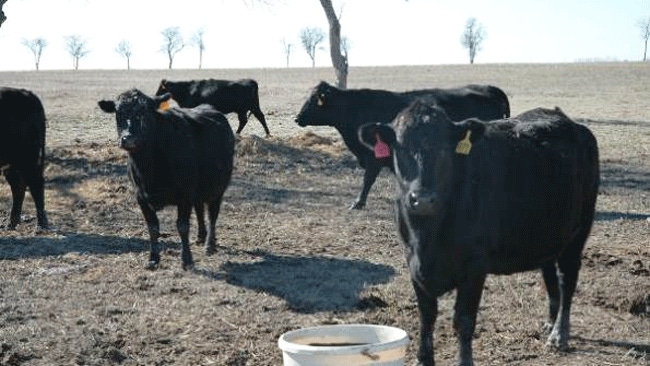May 13, 2013

Extended cold weather, abundant supplies of competing meats, high gas prices and increased payroll taxes have all played a part in limiting beef demand this spring.
However, several of those factors have now changed.
Choice boxed beef reached record levels above $200 per hundredweight earlier this month, with fed cattle prices not far behind. The late spring rally comes after boxed beef and fed markets appeared to have topped in March.
Derrell Peel, Oklahoma State University Cooperative Extension livestock marketing specialist at Stillwater, said the recent rally in Choice boxed beef can be attributed in part to beef purchases for the upcoming Memorial Day weekend.
“Though the weather has moderated somewhat recently, winter conditions still occurred later than usual,” he said. “Purchases now seem to be more in the tone of insisting that the weather will warm up for the first big summer holiday, in the absence of concrete improvement in the weather so far.”
Check live cattle futures prices now
Beef demand also is getting a boost in the form of lower gasoline prices and strength in competing meat prices. Broiler breast meat has made a strong increase, leading to the highest prices since 2010. On the pork side, ham prices have recovered dramatically since Easter lows, although pork loin prices remain relatively weak.
Supply side of market
“The supply side of the market also is part of the recent rally and will play an even larger role in the coming weeks,” Peel said.
Despite year-over-year increases in steer and heifer slaughter in the last two weeks of data, combined steer and heifer slaughter is down 2.3 percent for the year to date. Total cattle slaughter has decreased only 1.5 percent so far this year, thanks in large part to a 1.7 percent increase in cow slaughter, which had helped mitigate the drop.
“Though feedlot marketings and cattle slaughter typically increase seasonally in May and June, the increase this year may be muted as steer and heifer slaughter will continue to be relatively tight given lower placements in recent months,” Peel said.
“Cow slaughter is expected to decrease as the unexpected increase in beef cow slaughter the last five weeks will likely drop sharply in the coming weeks.”
Carcass weights are up from year-ago levels, but are only modestly higher compared to last year’s strong year-over-year increases.
Total beef production is projected to be down approximately 2.5 percent in the second quarter; unfortunately, total beef production is expected to drop sharply by 5 percent in the third quarter and even more in the fourth quarter of the year.
Both boxed beef and fed cattle prices are expected to decrease seasonally into the summer as well. Unfortunately, there is a great deal of uncertainty as to the amount of the decrease.
“Reduced cattle slaughter moving into the third quarter will provide supply support,” Peel said. “There is reason to expect a smaller fed cattle price decline than would be normally expected this summer.”
Peel said fed cattle prices may pull back below the $125 per hundredweight level for summer lows and then rebound towards the $130 per hundredweight level in the fourth quarter.
“Beef demand is and will remain the key,” he said. “A warm Memorial Day holiday with strong beef sales may do much to spur stronger beef demand through the summer.”
You might also like
Georgia AgrAbility helping farmers get back to work
Auto-steer driving peanut grower profits
Late corn plantings about to influence soybean acreage
You May Also Like




